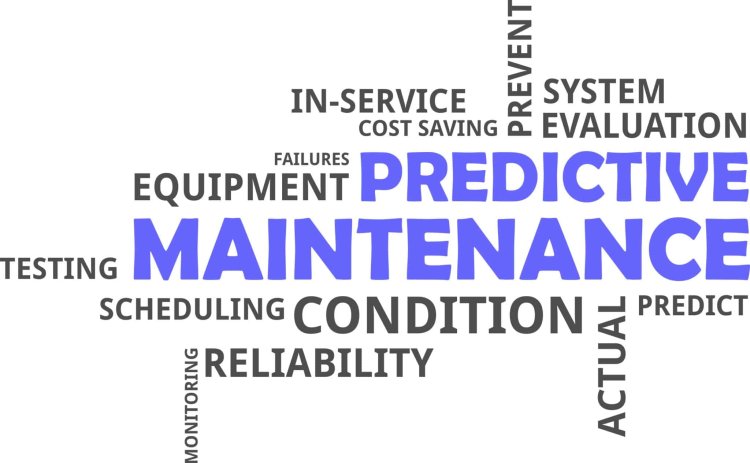How Predictive Maintenance Reduces System Downtime And Costs
Predictive maintenance changes the game. By leveraging real-time data and advanced analytics, it identifies potential issues before they escalate, ensuring your systems stay online and your budget stays intact.

System failures don’t just cost money—they disrupt operations, derail productivity, and jeopardize success. Predictive maintenance changes the game. By leveraging real-time data and advanced analytics, it identifies potential issues before they escalate, ensuring your systems stay online and your budget stays intact.
This isn’t a futuristic concept; it’s a proven strategy already transforming industries worldwide. Say goodbye to reactive fixes and hello to streamlined efficiency.
Ready to take control of your operations?
Here’s how predictive maintenance is making it happen:
Predictive Maintenance In Reducing Downtime
1. Real-Time Monitoring and Diagnostics
Real-time monitoring and diagnostics enable businesses to track equipment performance continuously, identifying potential issues as they arise. By using advanced sensors and analytics, this approach ensures systems operate at peak efficiency while minimizing the risk of sudden failures. Smart PC systems take this a step further by integrating intelligent diagnostics that provide actionable insights, helping you address problems before they escalate.
In a case study revealed by Medium, companies that adopt predictive maintenance can reduce breakdowns by 70% and maintenance costs by 25%.
With instant alerts and detailed reports, real-time monitoring keeps your operations running smoothly and reduces downtime dramatically.
IoT sensors continuously monitor critical parameters such as:
-
Vibration levels
-
Temperature
-
Pressure
-
Energy consumption
This data is sent to predictive maintenance systems, which use ML models to detect anomalies. Early detection of abnormal patterns allows technicians to intervene before a failure occurs, significantly reducing unplanned downtime.
2. Enhanced Asset Lifecycle Management
Predictive maintenance extends the life of assets by ensuring timely interventions. For example, a manufacturing plant can prevent wear and tear on machinery by addressing minor issues early. This approach ensures:
-
Reduced stress on components
-
Optimized equipment performance
-
Fewer catastrophic failures
3. Intelligent Maintenance Scheduling
Predictive maintenance systems use data to forecast the best time for maintenance. This prevents unnecessary shutdowns and ensures maintenance tasks align with production schedules.
Key Benefits:
-
Maintenance activities occur during planned downtimes.
-
Avoidance of production delays.
-
Improved resource allocation.
Real-World Example:
A leading automotive manufacturer implemented predictive maintenance on its assembly lines, reducing unplanned downtime by 30% and saving millions annually in repair costs.
Predictive Maintenance In Reducing Costs
1. Minimizing Emergency Repairs
Emergency repairs are costly due to:
-
Higher labor costs for urgent tasks.
-
Expensive replacement parts are needed immediately.
-
Potential collateral damage to nearby components.
Predictive maintenance avoids these scenarios by identifying issues early, allowing for planned, cost-effective repairs.
A report by The Agility Effect shows that Predictive maintenance can increase production line availability by 5-15% and reduce maintenance costs by 18-25%.
2. Reducing Spare Part Inventory
Predictive maintenance accurately forecasts which parts will need replacement and when. This reduces the need for maintaining large inventories of spare parts, which can tie up significant capital.
Benefits:
-
Lower inventory carrying costs.
-
Reduced storage space requirements.
-
Faster turnaround times for repairs.
3. Improving Energy Efficiency
Malfunctioning equipment often consumes more energy than necessary. Predictive maintenance ensures systems operate at peak efficiency, lowering energy costs.
Key Metrics to Measure Success
Implementing predictive maintenance is a significant investment. To measure its effectiveness, track these key metrics:
-
Mean Time Between Failures (MTBF): Increases with effective predictive maintenance.
-
Mean Time to Repair (MTTR): Decreases as issues are identified earlier.
-
Maintenance Costs: Should be reduced over time.
-
Equipment Availability: This should improve consistently.
-
Energy Consumption: This should decrease due to optimized performance.
Industries Benefiting from Predictive Maintenance
|
Industries |
Description |
|
Manufacturing |
Predictive maintenance ensures that equipment operates smoothly by detecting issues before they lead to failures, saving time and money. |
|
Energy |
Predictive techniques help in monitoring turbines, transformers, and other critical equipment, reducing the likelihood of power outages. |
|
Transportation |
Predictive maintenance detects potential faults in engines, improving safety and operational efficiency. |
Future Trends In Predictive Maintenance
The evolution of predictive maintenance is closely tied to advancements in technology:
1. AI-Driven Insights
AI will improve the accuracy of failure predictions, enabling more precise maintenance schedules.
2. Digital Twins
Digital twins create virtual replicas of physical assets, allowing for real-time simulations and predictive analysis.
3. 5G Connectivity
Faster data transfer and low latency will enhance IoT and edge computing capabilities, making predictive maintenance even more efficient.
4. Autonomous Maintenance
Self-maintaining systems will perform minor repairs autonomously, further reducing human intervention.
According to the Markets and Markets report, the predictive maintenance market is expected to grow from USD 10.6 billion in 2024 to USD 47.8 billion in 2029, at a CAGR of 35.1% during the forecast period.
Conclusion
Predictive maintenance isn’t just a technological advancement—it’s a strategic shift in how businesses manage their systems and resources. Identifying potential issues early and optimizing maintenance schedules, ensures smoother operations, reduces unexpected downtime, and lowers overall costs.
With tools like IoT sensors and AI-powered analytics, this approach empowers businesses to move from reactive repairs to proactive planning, extending the lifespan of critical equipment and enhancing productivity.
So, whether you’re looking to improve efficiency or control costs, predictive maintenance offers a practical, forward-thinking solution. Embrace this technology today to safeguard your systems and secure a more resilient future.
What's Your Reaction?



















